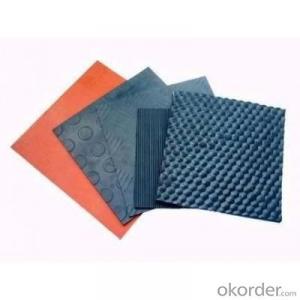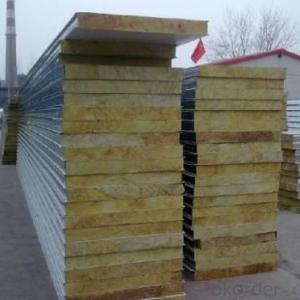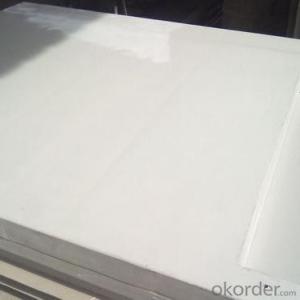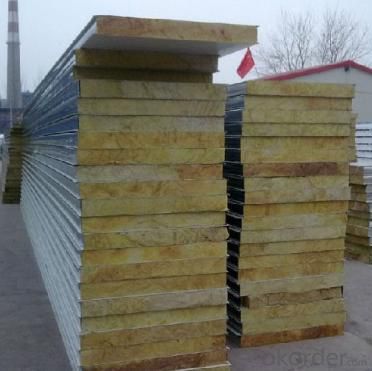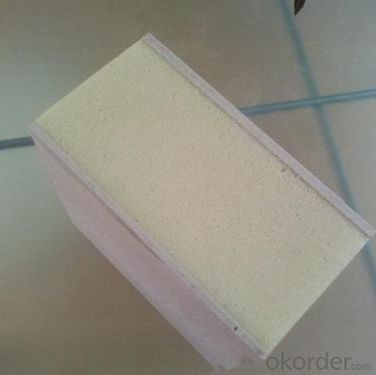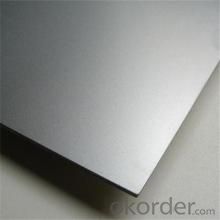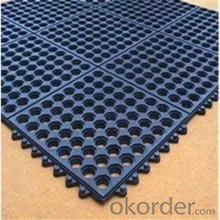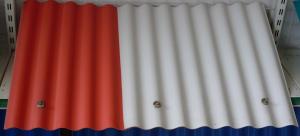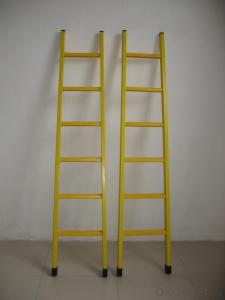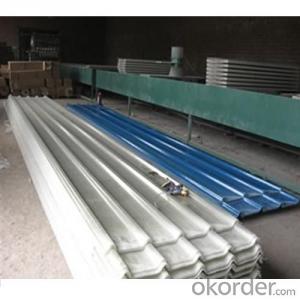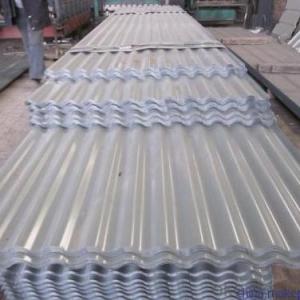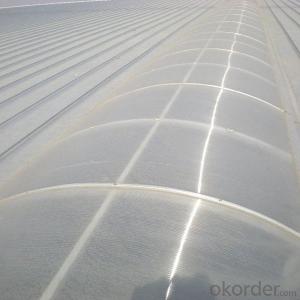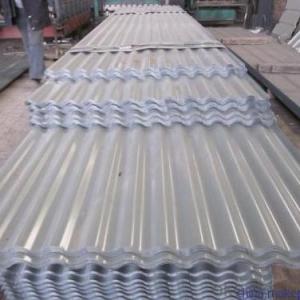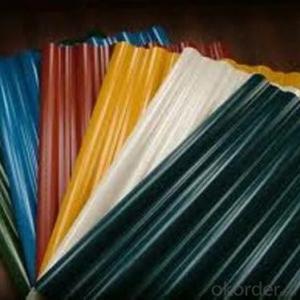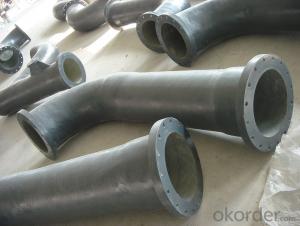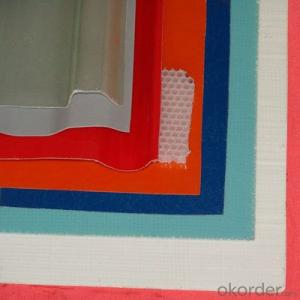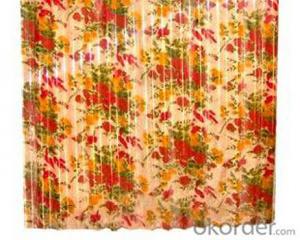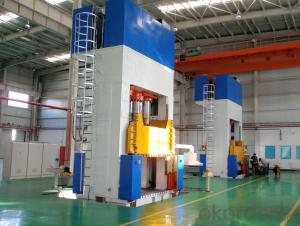FRP Roofing Panel - Transparent Plastic Roof/FRP Roof Sheet
- Loading Port:
- Tianjin
- Payment Terms:
- TT OR LC
- Min Order Qty:
- 300 m
- Supply Capability:
- 50000 m/month
OKorder Service Pledge
OKorder Financial Service
You Might Also Like
Specification
PRODUCT DESCRIPTION
Equipment is FRP continuous molding machine, unit mix of resin, fiber Wall to Wall thickness control, process regulation, curing, cutting, cleaning consisting of several parts. The production capacity can reach 2,500 meters. The accuracy of the equipment reached the advanced level, while the advanced production technology to ensure product quality and stability.
FRP flooring panel is a big size profile which is made by pultrusion technology and in holistic shape, it could
form a continuours close plane by unique self-lock structure,which could be used as load structures in various
corrosion environments and could replace wood plate, aluminum plate or steel plate etc.
FEATURES
1.Light transmission rate of 80%
2.Anti-aging
3.good corrosion resistance
4.excellent toughness
5.used in -60°c to 100 °c
6.Thickness:0.8-2.5mm
7.length:Customized
8.Excellent water resistance
9.Impact resistance
SPECIFICATIONS
| Name: | Fibreglass Reinforced Polyester(FRP ) Sheet |
| Material: | Protective film, Unsaturated resin polyester, Fiberglass |
| Weight: | 1800g/2400g/2750g/3050g Square meter |
| Thickness: | 0.8~3.0mm |
| Length: | Customized |
| Temp: | used in -40°c to 140 °c |
| OEM: | Welcomed |
| Color: | Clear/Blue |
PICTURES
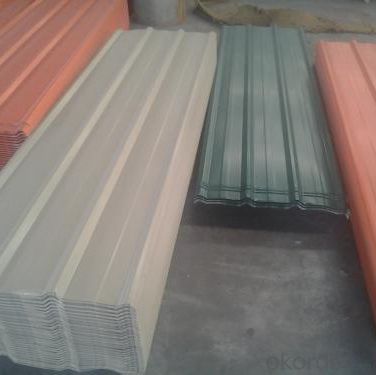
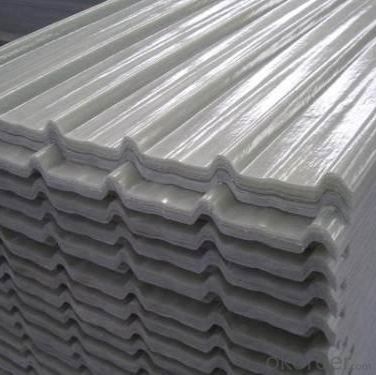
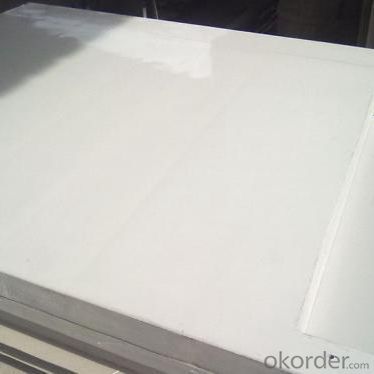
- Q: Can FRP roofing panels be installed on top of plywood or OSB?
- Yes, FRP roofing panels can be installed on top of plywood or OSB. However, it is important to ensure that the plywood or OSB is in good condition, properly secured, and capable of supporting the weight of the FRP panels. Additionally, proper waterproofing measures should be taken to prevent any water damage to the underlying plywood or OSB.
- Q: Are FRP roofing panels prone to warping from heavy machinery?
- The durability and resistance to warping of FRP roofing panels are well-known. However, exposure to heavy machinery may result in warping, depending on various factors. To begin with, the resistance to warping of FRP roofing panels is greatly influenced by their thickness and quality. Thicker panels with a higher fiberglass content are less likely to warp under heavy machinery loads compared to thinner or lower-quality panels. Additionally, the type and weight of the heavy machinery can affect the probability of warping. While FRP panels can withstand normal loads like snow or wind, excessive weight from heavy machinery can surpass their load-bearing capacity and potentially cause warping. Moreover, the condition of the underlying support structure is crucial. If the structure is weak or incapable of handling the weight of heavy machinery, it can create localized pressure points on the FRP panels, increasing the risk of warping. Proper installation is also vital in preventing warping. Inadequate fastening of the panels or gaps and uneven pressure distribution during installation can contribute to warping, particularly under heavy machinery loads. To minimize the possibility of warping, it is advisable to seek guidance from a professional roofing contractor with expertise in FRP installations. They can evaluate the specific requirements of the roofing project, taking into account the type and weight of machinery involved, and recommend suitable panel thickness, quality, and installation techniques to ensure maximum durability while minimizing the risk of warping.
- Q: Can FRP roofing panels be used for skylights in sports facilities?
- Yes, FRP roofing panels can be used for skylights in sports facilities. FRP panels are lightweight, durable, and have excellent light transmission properties, making them suitable for skylights. Additionally, FRP panels are resistant to UV rays and weathering, making them ideal for outdoor use in sports facilities.
- Q: Can FRP roofing panels be used for flat roofs?
- FRP roofing panels are indeed applicable for flat roofs. These panels are renowned for their durability, lightweight design, and ability to withstand corrosion, rendering them suitable for a wide range of uses, including flat roofs. They exhibit exceptional resistance to weather conditions and can endure even the harshest environmental elements. Furthermore, the installation and maintenance of FRP panels are hassle-free, which contributes to their popularity for flat roofs. Nonetheless, it is crucial to seek guidance from a skilled roofer or contractor to guarantee proper installation of the FRP panels and ensure compliance with your flat roof's specific demands.
- Q: Can FRP roofing panels be used for canopies over entrances?
- Yes, FRP (Fiberglass Reinforced Plastic) roofing panels can be used for canopies over entrances. FRP panels are lightweight, durable, and have excellent weather resistance, making them suitable for outdoor applications such as canopies. They can provide protection from the elements and create an inviting and visually appealing entrance. Additionally, FRP panels are available in various colors, textures, and designs, allowing for customization to match the aesthetic requirements of the building or entrance.
- Q: Can FRP roofing panels be used in zoos or animal enclosures?
- Yes, FRP (Fiberglass Reinforced Plastic) roofing panels can be used in zoos or animal enclosures. FRP panels are a popular choice for roofing solutions due to their durability, strength, and resistance to various environmental conditions. They are lightweight, easy to install, and have excellent weatherability, making them suitable for outdoor applications such as animal enclosures. FRP panels are also resistant to corrosion, moisture, and UV radiation, which are important factors to consider when housing animals. They provide a protective barrier against harsh weather elements, ensuring the safety and comfort of the animals. Furthermore, FRP panels can be customized to fit specific enclosure requirements, including size, shape, and color. This flexibility allows zookeepers to create enclosures that mimic the natural habitat of the animals, promoting their well-being and overall health. Additionally, FRP panels are non-toxic and easy to clean, which is crucial for maintaining hygiene in animal enclosures. They can be easily washed and disinfected, preventing the growth of bacteria and ensuring a safe environment for both the animals and the zookeepers. In conclusion, FRP roofing panels are an excellent choice for use in zoos or animal enclosures. Their durability, resistance to environmental conditions, and customizability make them suitable for creating safe and comfortable habitats for a variety of animals.
- Q: Can FRP roofing panels be used for transportation infrastructure?
- Transportation infrastructure can make effective use of FRP roofing panels. These panels are renowned for their lightweight yet sturdy and long-lasting characteristics. They find extensive application in various industries, including transportation, owing to their ability to endure harsh environmental conditions. In the realm of transportation infrastructure, FRP roofing panels can serve well in different settings such as bus stops, train stations, airports, and parking facilities. They are suitable for covering platforms, walkways, shelters, and other areas necessitating protection against the elements. The lightness of FRP panels eases their installation and transportation, thereby reducing construction time and expenses. Furthermore, FRP roofing panels exhibit exceptional resistance to corrosion, chemicals, and UV radiation, making them a suitable choice for outdoor use. They also possess fire-resistant qualities, thereby enhancing the safety of transportation infrastructure. Moreover, FRP panels can be tailor-made to offer diverse finishes and colors, allowing for aesthetically pleasing designs that harmonize with the surrounding environment. They can be produced with varying textures and patterns to augment slip resistance, ensuring secure pedestrian movement. In conclusion, FRP roofing panels present a feasible alternative for transportation infrastructure due to their lightweight, durable, and resistant properties. They offer numerous advantages such as easy installation, low maintenance requirements, and improved safety.
- Q: Are FRP roofing panels resistant to bleach?
- FRP roofing panels are generally resistant to bleach. The material used in FRP panels, known as fiberglass reinforced plastic, is highly durable and resistant to a wide range of chemicals, including bleach. Bleach is commonly used as a cleaning agent, and FRP panels can withstand regular cleaning and exposure to bleach without significant damage or deterioration. However, it is important to note that prolonged or frequent exposure to bleach may cause some discoloration or fading of the panels over time.
- Q: Can FRP roofing panels be used for bus stop shelters?
- Certainly, bus stop shelters can absolutely utilize FRP (Fiberglass Reinforced Plastic) roofing panels. These panels possess characteristics such as being lightweight, resilient, and resistant to various weather conditions like rain, snow, and UV rays. Given their strength and capacity to endure harsh environments, these panels are widely employed in diverse applications, including roofing. When it comes to bus stop shelters, a material that can offer protection against the elements while being long-lasting and requiring minimal upkeep is essential. FRP roofing panels fulfill these requirements as they are robust, resistant to corrosion, and capable of withstanding extreme weather conditions. Moreover, these panels are simple to install and can be tailored to fit the specific dimensions and design of the bus stop shelter. Moreover, FRP panels provide outstanding light transmission, enabling natural light to permeate through and create a well-lit and inviting atmosphere for bus passengers. This results in enhanced safety and visibility throughout both day and night. In conclusion, FRP roofing panels are a suitable choice for bus stop shelters due to their durability, weather resistance, low maintenance needs, and ability to provide natural lighting.
- Q: Are FRP roofing panels suitable for parking garages or carports?
- Yes, FRP (Fiberglass Reinforced Plastic) roofing panels are suitable for parking garages or carports. They are lightweight, durable, and resistant to corrosion, making them ideal for use in outdoor structures. Additionally, FRP panels offer excellent UV protection, insulation, and are relatively easy to install and maintain, making them a practical choice for these applications.
Send your message to us
FRP Roofing Panel - Transparent Plastic Roof/FRP Roof Sheet
- Loading Port:
- Tianjin
- Payment Terms:
- TT OR LC
- Min Order Qty:
- 300 m
- Supply Capability:
- 50000 m/month
OKorder Service Pledge
OKorder Financial Service
Similar products
Hot products
Hot Searches
Related keywords
